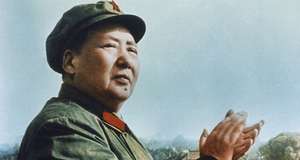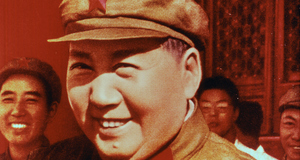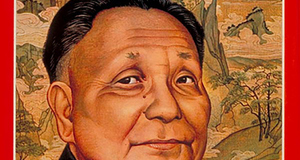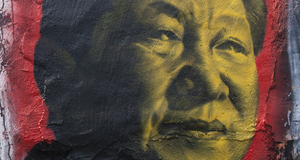|
From Interstate - Journal of International Affairs VOL. 2014/2015 NO. 1 Explaining China's Intervention in the Korean War in 1950
By Bangning Zhou
Interstate - Journal of International Affairs
2015, Vol. 2014/2015 No. 1 | pg. 2/2 | «
So far, the paper has analysed and concluded that constraints on economic reconstruction and military redeployment, and the need for domestic anti-sabotage campaign and the CCP’s regime consolidation played important roles in Beijing’s decision to intervene in Korea. However, there is still one aspect that needs to be examined: the role of the individual CCP leaders, especially Mao. Several newly published documents on the Korean War indicated that Mao played a dominant role in the process of decision making and the later military deployment of the CPV.31 The following part of the paper will conclude that the idea of a communist-capitalist confrontation and hostility towards the U.S. served as a catalyst to Beijing’s final decision.
In his analysis of the Chinese foreign policies Chinese foreign policies, Allen Whiting points out that the assumption of conflict played an important role in the ideological component of China’s foreign policy making.32 He further argued that the possession of Marxism-Leninism ideology by the CCP had leaded it to conclude that the confrontation between capitalism and communism is omnipresent and inevitable.33 Indeed, such ideology did influence the decision making of senior Politburo members, especially Mao. On one hand, the CCP leaders believed that China had a responsibility to assist communist North Korea in fighting against the invasion. By referring to the purpose of intervention as ‘to assist our Korean comrades’ and to rescue the ‘revolutionary strength of Korea’ in his telegram to Stalin, Mao showed that he felt an internationalist duty to assist the Korean revolution and to boost revolutionary morale among Communist movements in the whole of East Asia.34
With such feelings in mind, he responded to those who were against intervention in the Politburo by saying ‘once another nation is in a crisis, we’d feel bad if we stood idly by’. 35 On the other hand, Mao and the CCP leaders had been long aware of Washington’s hostility towards China, and believed that the confrontation between communist China and capitalist United States was inevitable. 36 In the official propagandas, the CCP leaders repeatedly emphasised that the United States was China’s enemy, from both the historical perspective (that the U.S. was one of the leading nations to exploit China) and the current perspective (that the capitalist U.S. was the natural enemy of communist China). 37
The influence of ideology of individual leaders is important in the case of China’s decision for two reasons. Firstly, by stressing the inevitability of the communist-capitalist confrontation and the need to support the communist revolution, the CCP could both justify China’s intervention and prove that the CCP’s decision was made from a moral standpoint. This justification and emphasis of moral high ground can on the one hand persuade the majority of Politburo members who argued against intervention, and on the other hand mobilise the support from the population. On the other hand, it also explains why the CCP decided to intervene and not to choose to rely on the alliance treaty.
With the ideology of class conflict and promoting communist revolutions, intervening in Korea would not only safeguard national security and alleviate internal pressure, but also promote China’s international status as an avant garde of world communist revolution. At the same time, under the domestic political situation in which individual leaders like Mao played an almost dominant role in the decision making process, the ideology of such leaders would influence their personal preference and therefore the decision making process of the whole administration.
This paper has argued that the main driving forces behind Beijing’s decision to intervene in Korea in 1950 were the ones of security concerns, domestic considerations and ideologies possessed by leaders of the CCP. The common explanations contend that China decided to intervene in Korea mainly because of the security consideration of possible U.S. invasion of Chinese territory. This paper argues that the security concern was not simply an invasion of Chinese sovereignty, because under the Sino-Soviet Alliance Treaty, China was guaranteed with an all-out Soviet support if it was invaded by other countries. As a country with its material power largely destroyed by the civil war and its military power far weaker than the United States, China’s intervention was extremely risky and brought a huge burden on its reconstruction projects. Therefore, the fact that China did not choose the alternative of relying on the Sino-Soviet Alliance Treaty and to stay outside of the war indicates that there are other factors influencing Beijing’s decision. This report has discussed three such factors in detail.
First, the report argues that the first factor is the security consideration. Specifically, this security consideration is mainly the one of constrains on economic reconstruction and deployment of troops for operations towards Taiwan and against anti-Communist forces.
The second factor is the domestic consideration of safeguarding and consolidating the CCP’s regime and authority. Beijing calculated that the intervention could boost domestic morale and help suppress the growing anti-Communist activities at home, and therefore strengthen the CCP’s authority and internal control, which was crucial to the CCP regime, established for less than a year.
The third such factor is the ideology possessed by individual CCP leaders like Mao. The belief that a communist-capitalist confrontation was inevitable and that China and the U.S. were natural enemies served as a catalyst alongside other calculations to motivate key leaders like Mao to make the decision of intervention regardless of the difficulties it might face. In summary, these three factors also have to be taken into account when explaining China’s reasons for its intervention in the Korean War in 1950.
Chai, C. Zhao, Y. Banmendian Tanpan (The Panmunjom Negotiation) (Beijing, the People’s Liberation Army Press, 1989).
Chen, J. China’s Road to the Korean War: The Making of the Sino-American Confrontation (New York, Columbia University Press, 1994).
Christensen, T. J. ‘Threats, Assurances, and the Last Chance for Peace: The Lessons of Mao’s Korean War Telegrams’, International Security, 17 (1992), pp. 122-154.
Goncharov, S. N. Lewis, J. W. Xue, L. Uncertain Partners: Stalin, Mao, and the Korean War (Stanford, Stanford University Press, 1993).
Hao, Y. Zhai, Z. ‘China’s Decision to Enter the Korean War: History Revisited’, The China Quarterly, 121 (1990), pp. 94-115.
Hu, S. Zhongguo Gongchandang de Qishi Nian (Seventy Years of the Chinese Communist Party) (Beijing, Zhonggong Dangshi Chubanshe (CCP History Press), 1991).
Hunt, M. H. ‘Beijing and the Korean Crisis, June 1950-July 1950’, Political Science Quarterly, 107 (1992), pp. 453-478.
Ministry of Foreign Affairs of the People’s Republic of China, Zhou Enlai Waijiao Wenxuan (Selected Diplomatic Works of Zhou Enlai) (Beijing, Zhongyang Wenxian Chubanshe (Central Document Press), 1990).
Whiting, A. S. China Crosses the Yalu: The Decision to Enter the Korean War (Stanford, Stanford University Press, 1968).
Yao, X. Cong Yalujiang Dao Banmendian (From Yalu River to Panmunjom) (Beijing, People’s Press, 1985).
- Whiting, A. S. China Crosses the Yalu: The Decision to Enter the Korean War (Stanford, Stanford University Press, 1968); Hao, Y. Zhai, Z. ‘China’s Decision to Enter the Korean War: History Revisited’, The China Quarterly, 121 (1990), pp. 94-115.
- Goncharov, S. N. Lewis, J. W. Xue, L. Uncertain Partners: Stalin, Mao, and the Korean War (Stanford, Stanford University Press, 1993).
- Goncharov. Lewis. Xue, Uncertain, p. 136. See also: Hunt, M. H. ‘Beijing and the Korean Crisis, June 1950-July 1950’, Political Science Quarterly, 107 (1992), p. 457.
- Hao, Zhai, ‘China’s Decision’, p. 99.
- Hao, Zhai, ‘China’s Decision’, p. 100.
- Whiting, China, p. 16.
- Whiting, China, p. 18.
- Hao, Zhai, ‘China’s Decision’, p. 100.
- Chen, J. China’s Road to the Korean War: The Making of the Sino-American Confrontation (New York, Columbia University Press, 1994), p. 152.
- Yao, X. Cong Yalujiang Dao Banmendian (From Yalu River to Panmunjom) (Beijing, People’s Press, 1985), p. 17-18.
- Chen, China’s Road, p. 185.
- Chen, China’s Road, p, 165.
- Chen, China’s Road, p. 184.
- Whiting, China, p. 158-160.
- Christensen, T. J. ‘Threats, Assurances, and the Last Chance for Peace: The Lessons of Mao’s Korean War Telegrams’, International Security, 17 (1992), p. 153.
- Hao, Zhai, ‘China’s Decision’, p. 104.
- Christensen, ‘Threats’, p. 135.
- Ministry of Foreign Affairs of the People’s Republic of China, Zhou Enlai Waijiao Wenxuan (Selected Diplomatic Works of Zhou Enlai) (Beijing, Zhongyang Wenxian Chubanshe (Central Document Press), 1990), p. 28-29.
- Hao, Zhai, ‘China’s Decision’, p. 104.
- Hu, S. Zhongguo Gongchandang de Qishi Nian (Seventy Years of the Chinese Communist Party) (Beijing, Zhonggong Dangshi Chubanshe (CCP History Press), 1991), p. 313-314.
- Chen, China’s Road, p. 124.
- Christensen, ‘Threats’, p. 153.
- Chen, China’s Road, p. 187.
- Hunt, ‘Beijing’, p. 471; Hao, Zhai, ‘China’s Decision’, p. 104.
- Chen, China’s Road, p. 168.
- Hunt, ‘Beijing’, p. 465.
- Chen, China’s Road, p. 124.
- Chai, C. Zhao, Y. Banmendian Tanpan (The Panmunjom Negotiation) (Beijing, the People’s Liberation Army Press, 1989), p. 31.
- Chen, China’s Road, p. 125.
- Chen, China’s Road, p. 124.
- Hunt, ‘Beijing’, p. 460.
- Whiting, China, p. 6-7.
- Whiting, China, p. 6-7.
- Christensen, ‘Threats’, p. 151. See also: Hunt, ‘Beijing’, p. 464.
- Goncharov. Lewis. Xue, Uncertain, p. 179-180.
- Chen, China’s Road, p. 124. See also: Hao and Zhai, ‘China’s Decision’, p. 106.
- Chen, China’s Road, p. 1179-180.
Chai, C. Zhao, Y. Banmendian Tanpan (The Panmunjom Negotiation) (Beijing, the People’s Liberation Army Press, 1989).
Chen, J. China’s Road to the Korean War: The Making of the Sino-American Confrontation (New York, Columbia University Press, 1994).
Christensen, T. J. ‘Threats, Assurances, and the Last Chance for Peace: The Lessons of Mao’s Korean War Telegrams’, International Security, 17 (1992), pp. 122-154.
Goncharov, S. N. Lewis, J. W. Xue, L. Uncertain Partners: Stalin, Mao, and the Korean War (Stanford, Stanford University Press, 1993).
Hao, Y. Zhai, Z. ‘China’s Decision to Enter the Korean War: History Revisited’, The China Quarterly, 121 (1990), pp. 94-115.
Hu, S. Zhongguo Gongchandang de Qishi Nian (Seventy Years of the Chinese Communist Party) (Beijing, Zhonggong Dangshi Chubanshe (CCP History Press), 1991).
Hunt, M. H. ‘Beijing and the Korean Crisis, June 1950-July 1950’, Political Science Quarterly, 107 (1992), pp. 453-478.
Ministry of Foreign Affairs of the People’s Republic of China, Zhou Enlai Waijiao Wenxuan (Selected Diplomatic Works of Zhou Enlai) (Beijing, Zhongyang Wenxian Chubanshe (Central Document Press), 1990).
Whiting, A. S. China Crosses the Yalu: The Decision to Enter the Korean War (Stanford, Stanford University Press, 1968).
Yao, X. Cong Yalujiang Dao Banmendian (From Yalu River to Panmunjom) (Beijing, People’s Press, 1985).
Endnotes
- Whiting, A. S. China Crosses the Yalu: The Decision to Enter the Korean War (Stanford, Stanford University Press, 1968); Hao, Y. Zhai, Z. ‘China’s Decision to Enter the Korean War: History Revisited’, The China Quarterly, 121 (1990), pp. 94-115.
- Goncharov, S. N. Lewis, J. W. Xue, L. Uncertain Partners: Stalin, Mao, and the Korean War (Stanford, Stanford University Press, 1993).
- Goncharov. Lewis. Xue, Uncertain, p. 136. See also: Hunt, M. H. ‘Beijing and the Korean Crisis, June 1950-July 1950’, Political Science Quarterly, 107 (1992), p. 457.
- Hao, Zhai, ‘China’s Decision’, p. 99.
- Hao, Zhai, ‘China’s Decision’, p. 100.
- Whiting, China, p. 16.
- Whiting, China, p. 18.
- Hao, Zhai, ‘China’s Decision’, p. 100.
- Chen, J. China’s Road to the Korean War: The Making of the Sino-American Confrontation (New York, Columbia University Press, 1994), p. 152.
- Yao, X. Cong Yalujiang Dao Banmendian (From Yalu River to Panmunjom) (Beijing, People’s Press, 1985), p. 17-18.
- Chen, China’s Road, p. 185.
- Chen, China’s Road, p, 165.
- Chen, China’s Road, p. 184.
- Whiting, China, p. 158-160.
- Christensen, T. J. ‘Threats, Assurances, and the Last Chance for Peace: The Lessons of Mao’s Korean War Telegrams’, International Security, 17 (1992), p. 153.
- Hao, Zhai, ‘China’s Decision’, p. 104.
- Christensen, ‘Threats’, p. 135.
- Ministry of Foreign Affairs of the People’s Republic of China, Zhou Enlai Waijiao Wenxuan (Selected Diplomatic Works of Zhou Enlai) (Beijing, Zhongyang Wenxian Chubanshe (Central Document Press), 1990), p. 28-29.
- Hao, Zhai, ‘China’s Decision’, p. 104.
- Hu, S. Zhongguo Gongchandang de Qishi Nian (Seventy Years of the Chinese Communist Party) (Beijing, Zhonggong Dangshi Chubanshe (CCP History Press), 1991), p. 313-314.
- Chen, China’s Road, p. 124.
- Christensen, ‘Threats’, p. 153.
- Chen, China’s Road, p. 187.
- Hunt, ‘Beijing’, p. 471; Hao, Zhai, ‘China’s Decision’, p. 104.
- Chen, China’s Road, p. 168.
- Hunt, ‘Beijing’, p. 465.
- Chen, China’s Road, p. 124.
- Chai, C. Zhao, Y. Banmendian Tanpan (The Panmunjom Negotiation) (Beijing, the People’s Liberation Army Press, 1989), p. 31.
- Chen, China’s Road, p. 125.
- Chen, China’s Road, p. 124.
- Hunt, ‘Beijing’, p. 460.
- Whiting, China, p. 6-7.
- Whiting, China, p. 6-7.
- Christensen, ‘Threats’, p. 151. See also: Hunt, ‘Beijing’, p. 464.
- Goncharov. Lewis. Xue, Uncertain, p. 179-180.
- Chen, China’s Road, p. 124. See also: Hao and Zhai, ‘China’s Decision’, p. 106.
- Chen, China’s Road, p. 1179-180.
Suggested Reading from Inquiries Journal
Chinese intervention in Korea in October 1950 continued a period of hideous violence and death in China's history. Between 1927 and 1949, around 21.5 to 27.5 million Chinese had died in the Second Sino-Japanese War and in the Chinese Civil War. Despite this terrible loss of life, exactly one year after the founding of the People... MORE»
This article uses two decision-making theories – rational choice theory and prospect theory – to examine China’s resolution to intervene militarily in the Korean War. I argue that Chairman Mao Zedong was in a domain of loss both domestically and internationally when the U.N. Command crossed the 38 Parallel and... MORE»
On the nineteenth of February Deng Xiaoping, the dominant figure of Chinese politics for 19 years, died and left behind him a booming China, and a nation with many unresolved questions. The British media proclaimed the passing away of ‘the last red titan’ and it certainly seemed the end of an era for a country that... MORE»
China and the Chinese Communist Party (CCP) that leads it has historically limited itself in regards to projecting power and inserting itself into international disputes and affairs. With the exception of its involvement... MORE»
Latest in History
2022, Vol. 14 No. 02
India was ruled by the Timurid-Mughal dynasty from 1526 to 1857. This period is mainly recognised for its art and architecture. The Timurid-Mughals also promoted knowledge and scholarship. Two of the Mughal emperors, Babur and Jahangir, wrote their... Read Article »
2022, Vol. 14 No. 02
The causes of the First World War remains a historiographical topic of contention more than 100 years on from the start of the conflict. With the passing of the centenary in 2014, a new wave of publications has expanded the scope and depth of historians... Read Article »
2021, Vol. 13 No. 11
The Sino-Vietnamese War remains one of the most peculiar military engagements during the Cold War. Conventional wisdom would hold that it was a proxy war in the vein of the United States’ war in Vietnam or the Soviet invasion of Afghanistan... Read Article »
2021, Vol. 13 No. 11
While the Cold War is popularly regarded as a war of ideological conflict, to consider it solely as such does the long-winded tension a great disservice. In actuality, the Cold War manifested itself in numerous areas of life, including the various... Read Article »
2021, Vol. 13 No. 11
This article analyzes the role of musical works in the United States during World War II. It chronologically examines how the social and therapeutic functions of music evolved due to the developments of the war. This article uses the lyrics of wartime... Read Article »
2021, Vol. 13 No. 10
Early medieval Irish society operated on an elaborate power structure formalized by law, practiced through social interaction, and maintained by tacit exploitation of the lower orders. This paper investigates the materialization of class hierarchies... Read Article »
2021, Vol. 13 No. 05
Some scholars of American history suggest the institution of slavery was dying out on the eve of the Civil War, implying the Civil War was fought over more generic, philosophical states' rights principles rather than slavery itself. Economic evidence... Read Article »
|




















